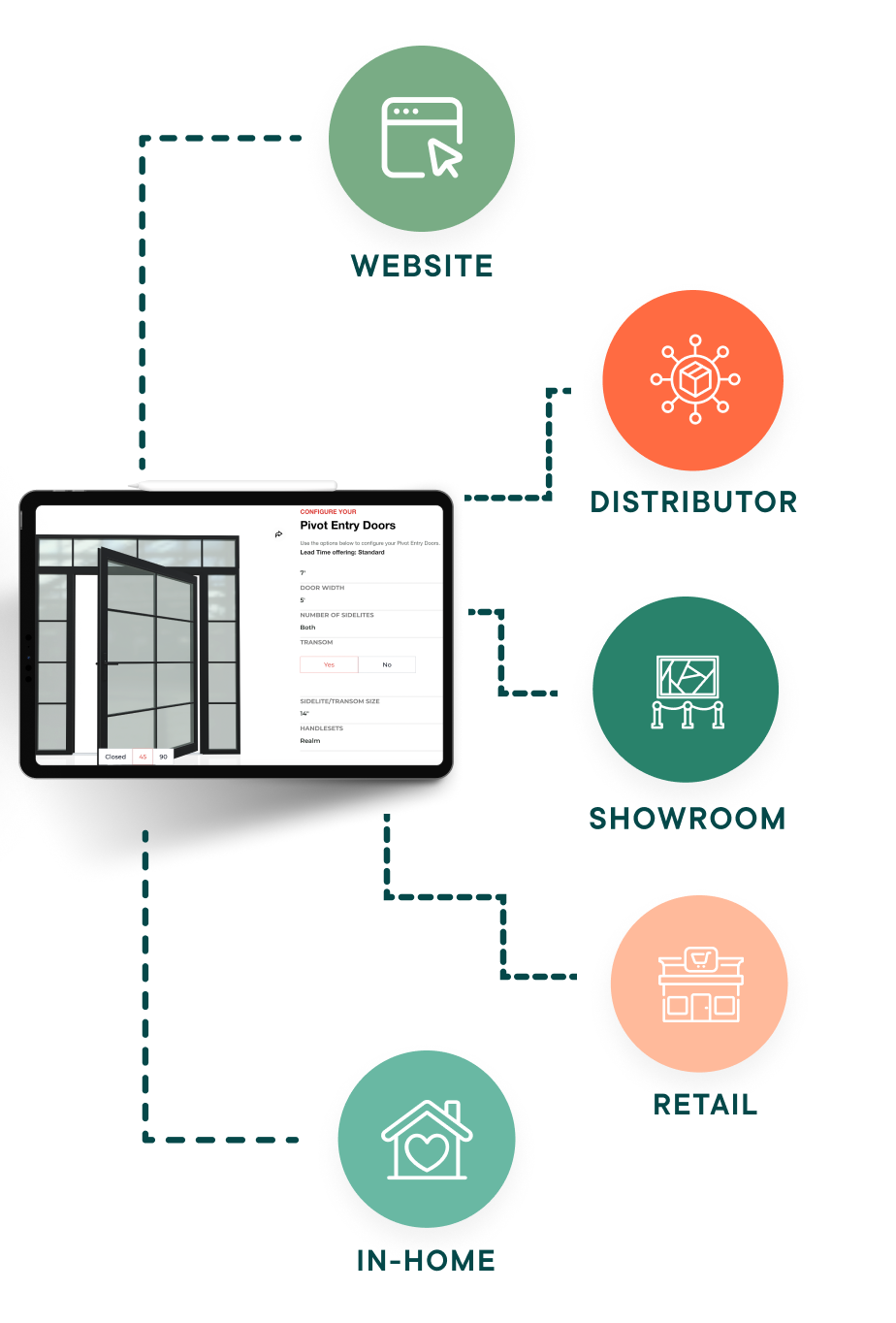2D Rendering and Virtual Photographer for Doors
In the world of doors, enhancing product visualization is crucial for attracting and engaging customers. This article explores the use of 2D rendering and virtual photography solutions to create an immersive shopping experience for door shoppers.
By leveraging advanced technologies, businesses can offer customization options and integrate augmented reality (AR) to provide a unique and interactive buying journey for their customers.
Key Takeaways
- Utilizing 3D rendering technology can significantly enhance the visualization of doors for customers.
- Implementing virtual photography solutions can create stunning 2D images that showcase the details and features of doors effectively.
- Offering customization options for shoppers allows them to personalize their door choices, leading to increased engagement and satisfaction.
- Integrating AR into the shopping experience enables customers to visualize how doors will look in their own spaces, enhancing their buying confidence.
- The combination of 2D rendering and virtual photography not only improves product visualization but also provides a seamless and interactive shopping experience for customers.

Enhancing Product Visualization for Doors
Utilizing 3D Rendering Technology
In the realm of door design and marketing, 3D rendering technology stands as a pivotal tool. It enables manufacturers and retailers to showcase their products with unprecedented clarity and detail.
By simulating materials and lighting, 3D renders provide a realistic depiction of how a door would appear in various environments. This not only improves accuracy but also enhances the overall visual appeal, making it easier for customers to envision the product in their own space.
The transformative power of 3D rendering is evident as it takes design concepts from the abstract to the tangible, offering clear visualizations that are crucial for customer decision-making.
The process of 3D rendering also streamlines the production pipeline. From automatic order processing to manufacturing outputs, the technology ensures that each customized door is reflected accurately in the final specifications. Here's how the workflow typically unfolds:
- A shopper completes their door configuration and confirms the purchase.
- The system automatically generates an order with the exact product specifications.
- 3D asset management stores models, materials, and textures for future use.
- Manufacturing outputs such as bill-of-materials, assembly instructions, CAD files, and cut patterns are automatically produced.
By integrating 3D rendering into their sales strategy, businesses can build a better product experience for their shoppers, ultimately leading to increased satisfaction and sales.

Implementing Virtual Photography Solutions
In the realm of door visualization, the implementation of virtual photography solutions stands as a transformative approach. Threekit Virtual Photographer technology enables the creation of thousands of high-quality product images from a single render, streamlining the process of showcasing various door designs and finishes.
This innovative tool not only enhances the visual appeal but also aligns with the expectations of today's digital shoppers, who prioritize product imagery when making online purchase decisions.
The integration of virtual photography into online platforms ensures a consistent and scalable method of displaying products, which is crucial for maintaining brand integrity and customer trust.
By leveraging 3D models, virtual photography automates the generation of photorealistic images, reducing the need for traditional photoshoots. This not only cuts down on time and expenses but also allows for a more dynamic presentation of products.
Customization Options for Shoppers
In the realm of door visualization and sales, customization is a pivotal factor that significantly enhances the customer experience. Threekit's 3D configurator software solution stands out by offering a suite of features designed to empower shoppers. With dynamic dimensions, customizable options, and advanced configuration tools, customers can tailor doors to their exact preferences, ensuring a perfect fit for their homes.
The ability to personalize products not only satisfies the aesthetic and functional requirements of consumers but also fosters a deeper connection between the customer and the product.
This level of personalization is supported by data indicating that digital shoppers are willing to pay up to 20% more for a product they can customize themselves.
By integrating these customization capabilities, retailers can not only meet but exceed customer expectations, leading to increased sales and customer loyalty.
Augmented Reality Integration
The integration of AR in the door industry marks a significant leap forward in how consumers interact with products before making a purchase. AR technology allows customers to visualize doors in their own space, providing a realistic impression of how the product will fit and complement their home. This immersive experience not only boosts consumer confidence but also enhances the decision-making process.
Hurst Doors' 2023 launch of an AR sales tool exemplifies the industry's move towards innovative solutions. This tool enables homeowners to superimpose various door designs onto their actual entryways, streamlining the selection process and personalizing the shopping experience.
The potential of AR to revolutionize the door industry is immense, offering a blend of convenience and customization that was previously unattainable.
By incorporating AR, retailers can offer a more dynamic and engaging shopping journey, which can lead to increased satisfaction and higher conversion rates.
Threekit for Doors
Threekit's door configurator software enhances product visualization and boosts sales by managing product assets and creating engaging visuals that can be distributed across platforms seamlessly.
Discover the future of door visualization with our cutting-edge product configurator and visual engine. Transform the way your customers interact with your products online, offering them a dynamic and immersive experience that will set you apart from the competition.
Visit our website now to learn more and take the first step toward revolutionizing your product presentation.
The Ideal Path-to-Purchase for Custom Doors
Where Top Door Brands are Succeeding and Where They Must Make Strides to Meet Buyer Needs
Read the eBook

